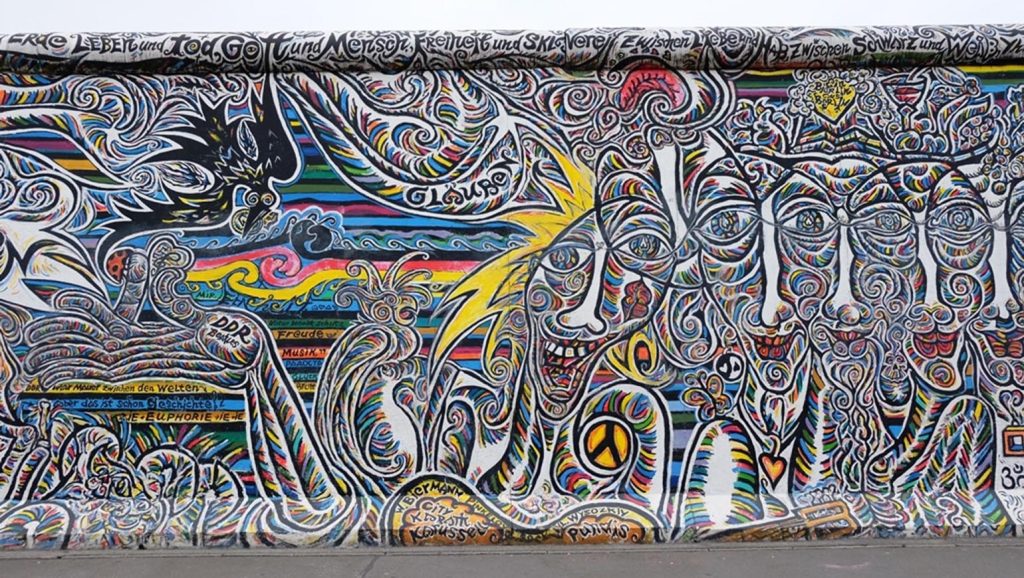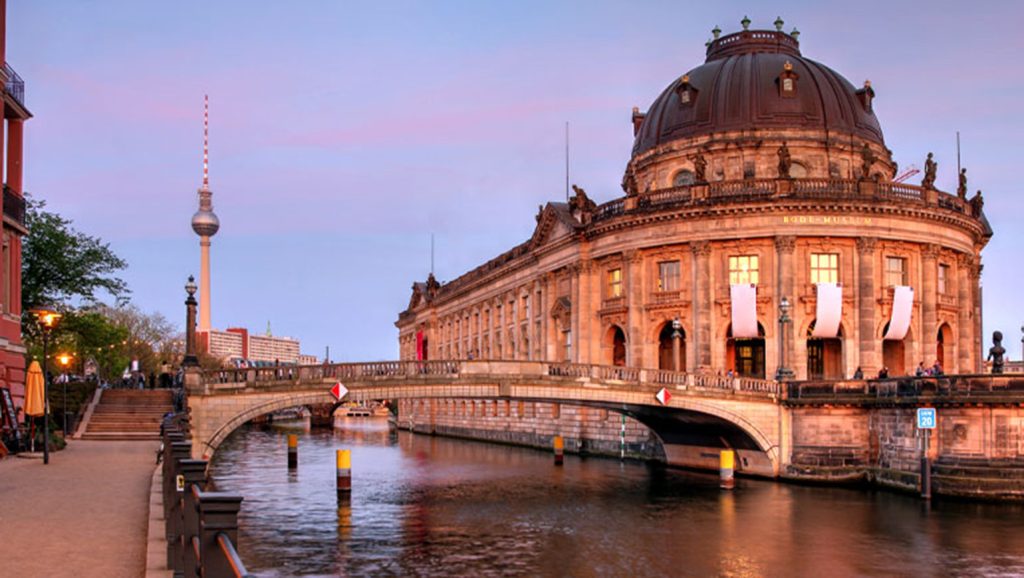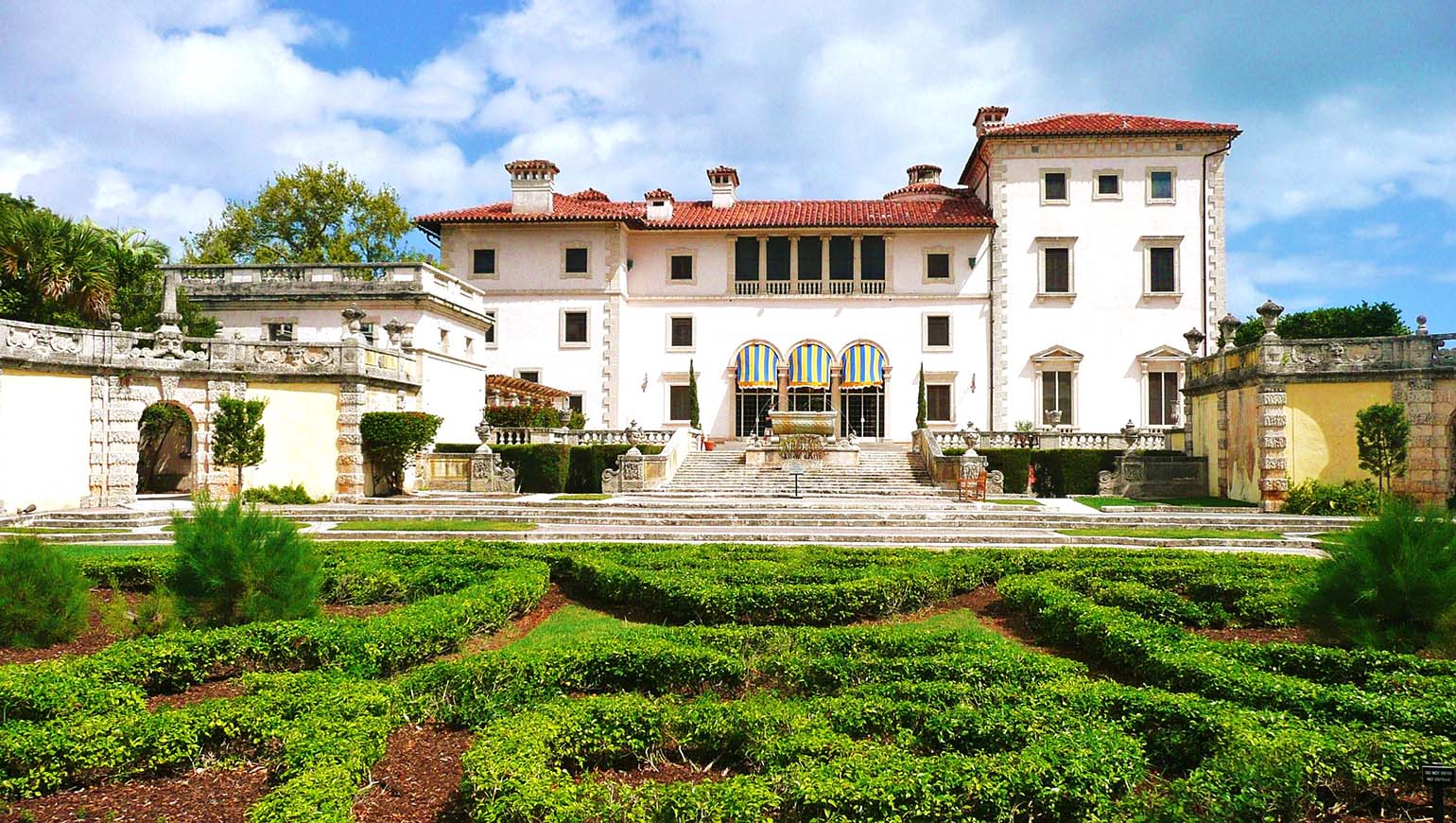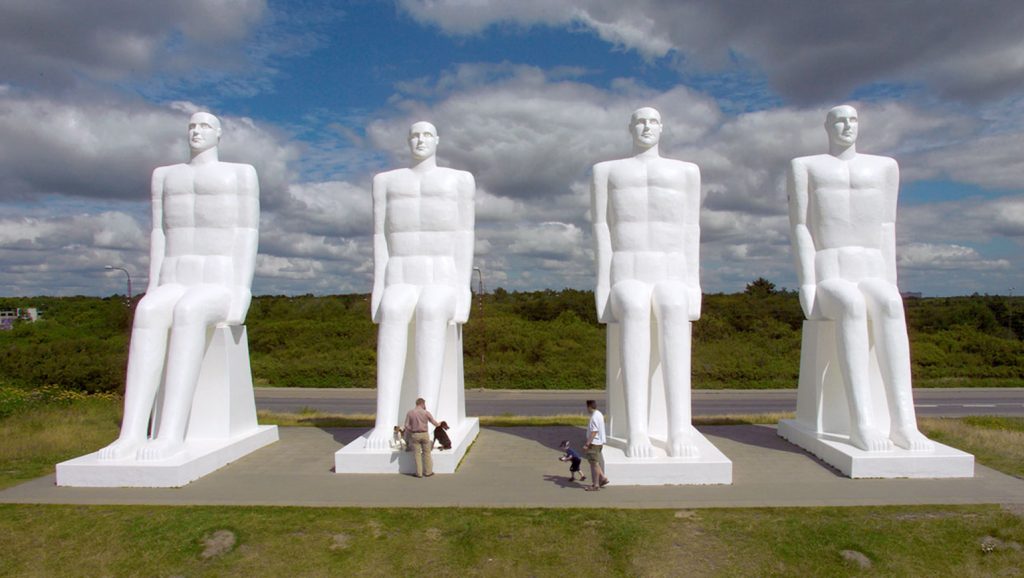With its rich history, diverse culture, and renowned attractions, I knew that my adventure in Germany’s capital would be an unforgettable experience. From strolling through the bustling streets and marveling at the city’s iconic landmarks to immersing myself in the vibrant arts scene and sampling delectable cuisine, I eagerly anticipated the many discoveries and encounters that awaited me.
Book Your Trip: Logistical Tips and Tricks
Book Your Flight
Find a cheap flight by using OneTravel. It’s my favorite search engine because it searches websites and airlines around the globe so you always know no stone is being left unturned.
Book Your Accommodation
You can book your hostel with Expedia. If you want to stay somewhere other than a hostel, use Kiwi as it consistently returns the cheapest rates for guesthouses and hotels.
Ready to Book Your Trip?
Check out my resource page for the best companies to use when you travel. I list all the ones I use when I travel. They are the best in class and you can’t go wrong using them on your trip.
1.Visit the Brandenburg Gate:
Standing tall at the end of Unter den Linden, a grand boulevard that once connected the city palace to the Tiergarten, this 18th-century neoclassical triumphal arch has been a witness to the city’s turbulent history and a symbol of unity and peace.
As I stood beneath the towering columns, I couldn’t help but feel a sense of awe and reverence for the many pivotal moments that had taken place right where I was standing. From the famous speech by President John F. Kennedy to the celebratory scenes that unfolded after the fall of the Berlin Wall, the Brandenburg Gate has played a central role in some of the most significant events of the 20th century.
Taking a moment to examine the intricate details of the Quadriga sculpture adorning the top of the gate, I marveled at the skill and craftsmanship that had gone into creating this iconic work of art. Depicting the goddess of victory driving a chariot pulled by four horses, the Quadriga serves as a powerful reminder of the triumph of peace and unity over division and conflict.
2.Explore the East Side Gallery:

As I walked along the vibrant, colorful murals, I was struck by the incredible talent and creativity of the artists who had transformed this once-divisive barrier into a canvas for artistic expression and a symbol of hope and unity.
With each mural I encountered, I found myself captivated by the diverse styles, bold colors, and powerful messages that were skillfully depicted on the wall’s surface. From Dmitri Vrubel’s haunting portrayal of the Fraternal Kiss to Birgit Kinder’s iconic image of a Trabant car breaking through the wall, each artwork told a story and conveyed a message that resonated deeply with me.
As I continued to explore the gallery, I was moved not only by the artistic beauty of the murals but also by the incredible history and significance of the wall itself. Standing there, I couldn’t help but reflect on the countless lives that had been impacted by the division it once represented and the hope and courage that the fall of the wall had inspired in people around the world.
3.Discover Museum Island:
I began my journey at the Pergamon Museum, renowned for its impressive collection of ancient artifacts and architectural reconstructions, including the breathtaking Ishtar Gate of Babylon and the Pergamon Altar. As I stood before these awe-inspiring structures, I was transported back in time, imagining the once-mighty civilizations that had crafted these magnificent works of art.
Next, I ventured into the Neues Museum, which houses an extraordinary collection of Egyptian, Prehistoric, and Classical antiquities. Among the many treasures on display, I was particularly captivated by the exquisite beauty and craftsmanship of the iconic bust of Nefertiti, an artifact that continues to captivate and inspire people around the world.
As I continued my exploration of Museum Island, I was struck by the sheer breadth and depth of the collections on display, from the exquisite sculptures at the Alte Nationalgalerie to the fascinating artifacts at the Altes and Bode Museums. With each exhibit I encountered, I felt an ever-growing sense of awe and appreciation for the incredible human achievements and the rich cultural heritage that these museums preserve and celebrate.
4.Stroll through the Tiergarten:
After spending several days exploring the bustling streets and historic sites of Berlin, I decided to take a leisurely stroll through the Tiergarten, the city’s largest and most beautiful park. As I entered the park, I was immediately struck by the lush greenery, serene atmosphere, and picturesque landscapes that surrounded me, offering a welcome respite from the urban hustle and bustle.
As I meandered along the winding paths, beneath the canopy of towering trees, I couldn’t help but feel a sense of peace and tranquility wash over me. The park was filled with charming ponds and bridges, providing idyllic spots to pause and take in the beauty of nature. The sounds of birdsong and the rustling of leaves in the gentle breeze created the perfect soundtrack for my leisurely walk.
Throughout my time in the Tiergarten, I encountered several lovely garden spaces, each with its own unique character and charm. From the beautifully manicured flower beds of the Rosengarten to the peaceful seclusion of the English Garden, I was delighted by the variety and beauty of the park’s many hidden gems.
As I continued my stroll, I also discovered several historic monuments and statues nestled within the park’s verdant landscape, including the iconic Siegessäule, or Victory Column. Climbing to the top of this impressive monument, I was rewarded with a stunning panoramic view of the city, a reminder of the bustling metropolis that lay just beyond the park’s tranquil borders.
5.Visit the Holocaust Memorial:

During my time in Berlin, I felt compelled to pay a visit to the Holocaust Memorial, a poignant tribute to the millions of lives lost during the Holocaust. As I approached the site, located near the Brandenburg Gate, I was struck by the somber atmosphere that seemed to envelop the area, setting it apart from the surrounding cityscape.
The memorial, officially known as the Memorial to the Murdered Jews of Europe, consists of 2,711 concrete slabs or “stelae” arranged in a grid pattern on a gently sloping field. As I began to walk through the maze-like arrangement of stelae, I was immediately struck by the disorienting effect of the memorial’s design. The uneven ground and the varying heights of the slabs created a sense of unease and dislocation, powerfully conveying the sense of confusion, fear, and despair experienced by the victims of the Holocaust.
As I continued to navigate the labyrinth of stelae, I found moments of quiet reflection, allowing the gravity of the memorial’s symbolism to truly sink in. The cold, unadorned concrete slabs seemed to represent the countless individual lives that were tragically cut short, each one unique yet connected to the others through the shared experience of unimaginable suffering.
Beneath the memorial, I discovered the underground information center, where I learned more about the Holocaust and the individual stories of its victims. The powerful exhibits and personal testimonies on display deepened my understanding of the magnitude of the tragedy, and the importance of remembering and honoring those who were lost.
As I emerged from the Holocaust Memorial, I was left with a profound sense of grief and reflection, but also a renewed determination to ensure that the lessons of history are never forgotten.
6.Explore the vibrant Kreuzberg neighborhood:
As I wandered through the bustling streets of Kreuzberg, I couldn’t help but be captivated by the incredible street art that adorned the walls of countless buildings. From intricate murals to bold graffiti tags, the neighborhood seemed to be a living canvas, with each artwork telling a unique story and reflecting the area’s diverse culture and history.
Kreuzberg’s multicultural atmosphere was equally apparent in the wide array of shops, restaurants, and bars that lined the streets. From traditional Turkish kebab shops to hip vegan cafés, the culinary offerings were as diverse and vibrant as the neighborhood itself. I took the opportunity to sample some delicious street food at one of the many food stands, relishing the rich flavors and textures of dishes from around the world.
During my stroll, I also stumbled upon several cozy bookstores, quirky boutiques, and independent art galleries, each adding to the neighborhood’s creative and eclectic charm. I spent hours browsing through the unique treasures on offer, chatting with friendly store owners and fellow visitors who shared my enthusiasm for the area’s artistic spirit.
7.Ascend the Reichstag Dome:
After pre-booking my visit and passing through the necessary security checks, I entered the Reichstag building and began my ascent to the dome. Along the way, I encountered various informative displays and exhibits that shed light on Germany’s political history, the workings of the Bundestag (German Federal Parliament), and the fascinating story of the Reichstag building itself, which has been a witness to many tumultuous events throughout the years.
As I reached the base of the glass dome, designed by architect Sir Norman Foster, I was struck by the sheer scale and beauty of the structure. The transparent design of the dome symbolizes the transparency and openness of German democracy, a powerful visual message that I found particularly inspiring.
I then began to climb the spiral ramp that winds its way to the top of the dome, marveling at the innovative design that allows visitors to ascend without ever retracing their steps. The higher I climbed, the more spectacular the views became, with the city of Berlin unfolding beneath me in all its historic and modern splendor.
From the top of the Reichstag Dome, I was treated to a stunning 360-degree panorama of Berlin, with landmarks such as the Brandenburg Gate, the Tiergarten, and the TV Tower all visible in the distance. I spent a considerable amount of time taking in the views and snapping photos, feeling a deep sense of awe and appreciation for the city’s rich history and vibrant present.
8.Experience the nightlife:

As a city known for its dynamic nightlife, I couldn’t leave Berlin without experiencing its legendary clubs, bars, and live music venues for myself. Excited for a night of dancing and meeting new friends from around the world, I decided to explore some of the city’s most popular nighttime hotspots.
My first stop was a bustling bar in the trendy neighborhood of Kreuzberg, where I enjoyed a refreshing cocktail and some live music. The atmosphere was electric, with people from all walks of life coming together to unwind and have a good time. I struck up conversations with fellow travelers and locals, who shared their favorite spots for late-night fun and even some insider tips on the city’s hidden gems.
With newfound friends and plenty of recommendations, I made my way to one of Berlin’s world-famous techno clubs. The energy in the club was palpable as soon as I stepped inside, with pulsing beats and mesmerizing lights drawing me towards the dance floor. Surrounded by an eclectic mix of partygoers, I couldn’t help but get swept up in the excitement and danced the night away, completely losing track of time.
As the night progressed, I ventured to a smaller, more intimate venue that featured an array of live bands and DJs. The diverse lineup of performers, ranging from electronic to indie rock, ensured that there was something for everyone to enjoy. I was particularly impressed by the warm and welcoming atmosphere of the venue, which made it easy to strike up conversations and connect with fellow music lovers.
9.Delve into history at the Topography of Terror:
As I walked through the various exhibits, I found myself immersed in the chilling history that unfolded before me. The museum’s collection of photographs, documents, and personal stories provided a comprehensive and sobering account of the atrocities committed during the Nazi regime. The exhibits were both informative and deeply moving, showcasing not only the mechanisms of terror but also the resilience and courage of those who suffered and resisted.
One particular exhibit that struck me was a series of personal testimonies from survivors and witnesses, recounting their experiences during this dark period. Their stories, told in their own words, brought the reality of the horrors to life in a way that statistics and facts alone could not. As I listened to these accounts, I felt a profound sense of empathy and connection to those who had endured unimaginable pain and loss.
Another powerful aspect of the Topography of Terror was its location on the grounds of the former Gestapo and SS headquarters. This haunting reminder of the past served as a stark backdrop for the museum, underscoring the importance of understanding and confronting this dark chapter in history.
10.Savor Berlin’s diverse cuisine:
I started my gastronomic adventure by indulging in traditional German dishes, such as schnitzel, bratwurst, and currywurst, which I enjoyed at some local restaurants and food stands. The hearty flavors and generous portions left me feeling satisfied and eager to discover more.
Venturing into the city’s bustling street markets, I found myself surrounded by a myriad of international flavors. I sampled delicious Turkish kebabs, fragrant Indian curries, and mouthwatering Italian pasta dishes, each offering a unique taste of the city’s multicultural landscape.
One particularly memorable experience was visiting Markthalle Neun, a lively indoor market located in the Kreuzberg neighborhood. As I strolled through the bustling hall, I was greeted by the enticing aromas of various food vendors, from artisanal cheese stalls to fresh seafood counters. I loved trying out different dishes from around the world, and the communal atmosphere made it easy to strike up conversations with fellow food enthusiasts.
Another highlight was sampling Berlin’s thriving vegan and vegetarian food scene. I was pleasantly surprised by the number of plant-based eateries, cafes, and street food options available, serving up innovative and delicious meat-free alternatives that even a carnivore like me couldn’t resist.
From the awe-inspiring historical sites and thought-provoking museums to the lively neighborhoods and mouthwatering culinary delights, each day brought new discoveries and unforgettable memories.
The connections I made with the warm and welcoming locals, as well as fellow travelers, added a depth and richness to my adventure that I will always cherish. The conversations, laughter, and shared experiences allowed me to not only learn about the diverse and vibrant culture of Berlin but also to gain new perspectives and insights that have expanded my understanding of the world.
Suggested Read:






